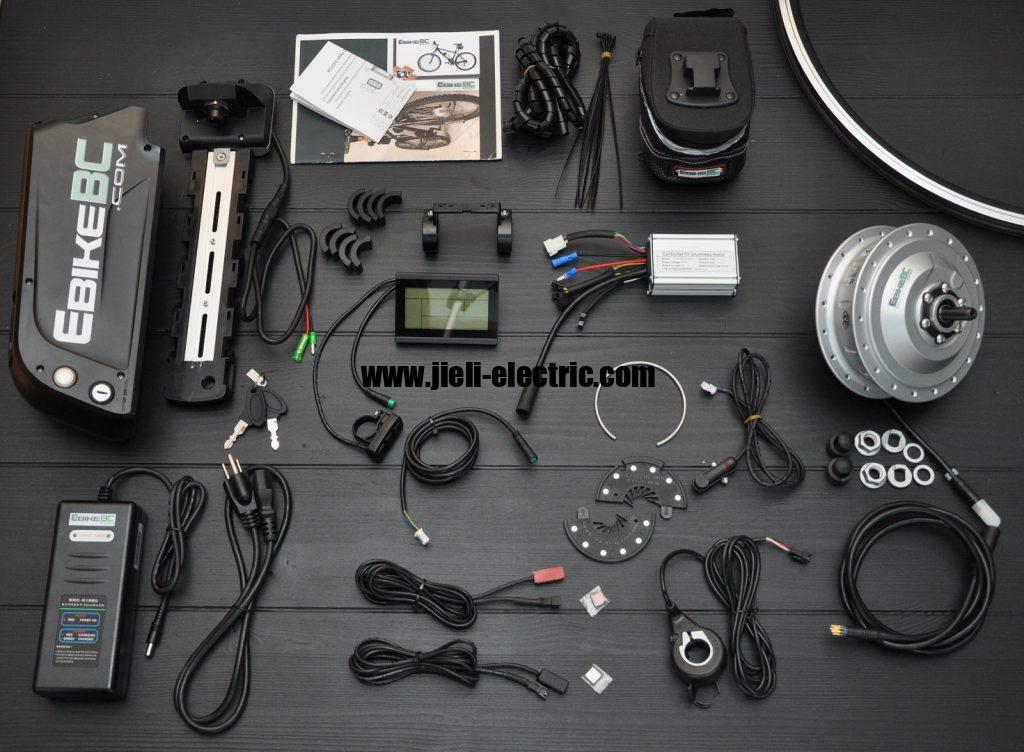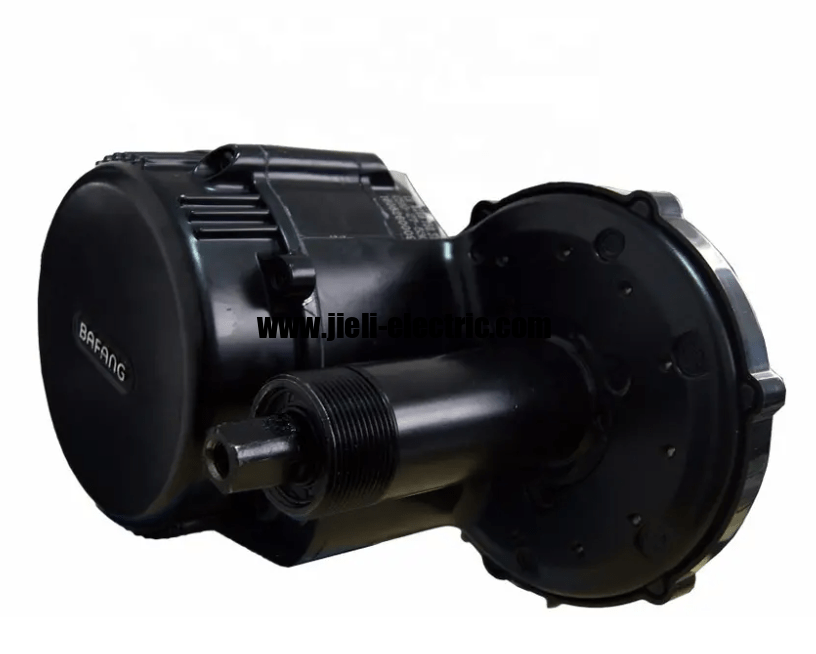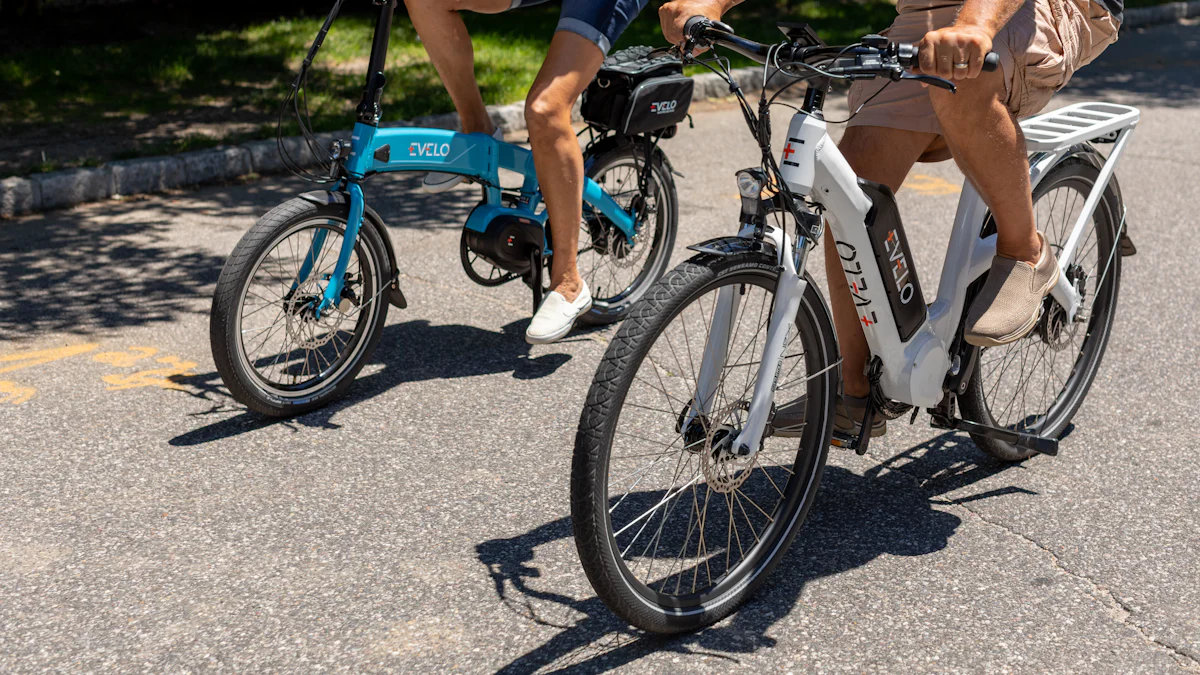
EBike Pedal Assist vs Throttle Comparison
Exploring the differences between pedal assist and throttle modes in e-bikes
| Features | pedal assist | throttle |
|---|---|---|
| Activation Method | Requires pedaling to activate motor | Provides immediate power without pedaling |
| Exercise Benefits | Promotes physical activity through pedaling | Offers less exercise benefit as pedaling is not required |
| Battery Efficiency | Conserves battery by activating only when pedaling | Drains battery faster due to continuous power demand |
| Ride Experience | Delivers a smoother and controlled ride | Provides effortless riding experience |
| Cost Considerations | May have higher initial and maintenance costs | Often comes with a lower upfront cost and simpler maintenance |
| Suitability for Different Terrains | Excels on varied terrains with adaptive assistance | Advantageous in flat or urban terrains for quick accelerations |
Electric bikes, or e-bikes, have surged in popularity. U.S. sales topped $1.3 billion in 2022. The global market size reached $35.69 billion in 2021. E-bikes offer two main modes of operation: pedal assist(PAS) and throttle. Understanding these modes is crucial for making an informed choice. Pedal assist requires pedaling to activate the motor. Throttle provides immediate power without pedaling. Each mode offers unique benefits and drawbacks. Choosing the right mode depends on individual needs and riding preferences.
Understanding Pedal Assist System
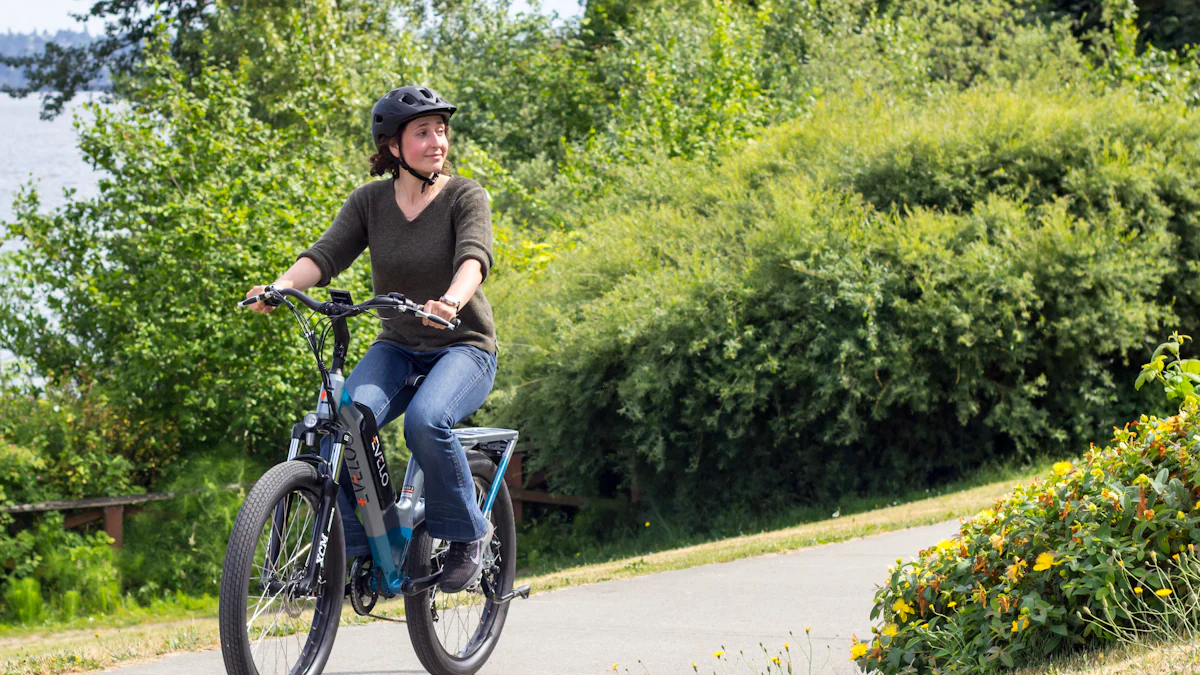
What is Pedal Assist?
Definition and basic functionality
Pedal assist refers to a feature on e-bikes that activates the motor only when the rider pedals. The system amplifies the rider’s pedaling power, making it easier to ride uphill or cover long distances. PAS provides a more natural riding experience by seamlessly integrating motor power with human effort.
Types of pedal assist systems (e.g., torque sensor, cadence sensor)
There are two main types of pedal assist systems:
- Torque Sensor: Measures the force applied to the pedals. More force results in more motor assistance.
- Cadence Sensor: Measures the speed at which the rider pedals. Faster pedaling triggers more motor assistance.
Benefits of Pedal Assist
Enhanced exercise benefits
Pedal assist encourages physical activity. Riders must pedal to activate the motor, promoting cardiovascular health and muscle engagement. This system offers a balanced workout while providing the necessary assistance for challenging terrains.
Extended battery life
Pedal assist systems typically consume less battery power compared to throttle systems. The motor activates only when needed, conserving energy and extending the bike’s range. Riders can enjoy longer trips with less frequent recharging.
Smoother ride experience
Pedal assist delivers a smoother and more controlled ride. The motor responds to the rider’s pedaling, ensuring a consistent and stable power output. This feature enhances comfort and reduces fatigue during long rides.
Drawbacks of Pedal Assist
Requires continuous pedaling
PAS demands continuous pedaling to maintain motor assistance. Riders cannot rely solely on the motor for propulsion. This requirement may be challenging for those with limited physical strength or endurance.
Potentially higher cost
Pedal assist systems, especially those with advanced sensors, can be more expensive. The technology involved in torque and cadence sensors adds to the overall cost of the e-bike. Budget-conscious buyers may find this a significant drawback.
Complexity in maintenance
Pedal assist systems involve intricate components like sensors and controllers. These parts may require specialized maintenance and repairs. Riders may face higher maintenance costs and longer downtimes if issues arise.
Understanding E-Bike Throttle
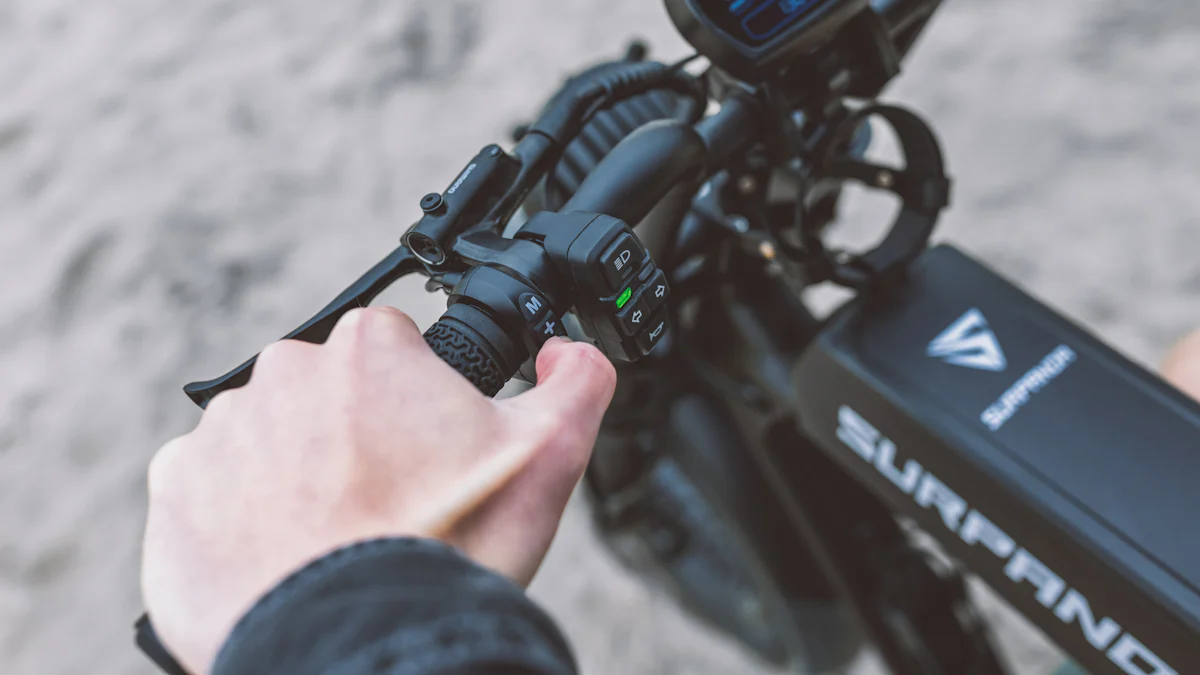
What is Throttle?
Definition and basic functionality
The throttle on an e-bike provides immediate power without the need for pedaling. Riders can control the motor’s output using a handlebar-mounted lever or button. This system allows for quick acceleration and effortless riding. Throttle systems in e-bikes function similarly to those in cars, where the accelerator pedal regulates speed and acceleration.
Types of throttle systems (e.g., thumb throttle, twist throttle)
There are two primary types of throttle systems:
- Thumb Throttle: Activated by pressing a lever with the thumb. This type offers precise control over the motor’s power.
- Twist Throttle: Operated by twisting the handlebar grip. This type provides a more intuitive and motorcycle-like experience.
Benefits of Throttle
Effortless riding experience
Throttle systems offer an effortless riding experience. Riders do not need to pedal to activate the motor. This feature makes it easy to navigate through traffic or take a break from pedaling during long rides.
Immediate power on demand
Throttle provides immediate power on demand. Riders can accelerate quickly from a standstill or increase speed instantly. This capability proves useful in situations requiring rapid acceleration, such as crossing intersections or overtaking slower vehicles.
Ideal for riders with physical limitations
Throttle systems are ideal for riders with physical limitations. Individuals with limited strength or endurance can benefit from the motor’s assistance without the need to pedal. This feature makes e-bikes accessible to a broader range of users, including those recovering from injuries or with chronic health conditions.
Drawbacks of Throttle
Reduced battery life
Throttle systems tend to reduce battery life more quickly. The continuous power demand from the motor drains the battery faster compared to electric bike pedal assist vs throttle. Riders may need to recharge more frequently, especially during long trips.
Less exercise benefit
Throttle systems offer fewer exercise benefits. Riders do not engage in pedaling, which reduces the physical activity involved. This feature may not appeal to individuals seeking to improve their fitness levels through cycling.
Potential safety concerns
Throttle systems can pose potential safety concerns. The immediate power delivery may lead to sudden accelerations, increasing the risk of accidents. Riders must exercise caution and practice proper handling techniques to ensure safe operation.
Comparative Analysis of Throttle and Pedal Assist
Performance Comparison
Speed and acceleration
Pedal assist systems provide a balanced approach to speed and acceleration. The motor amplifies the rider’s pedaling effort, resulting in a gradual increase in speed. This method ensures a controlled and smooth acceleration, ideal for maintaining stability during rides. In contrast, throttle systems offer immediate power on demand. Riders can achieve rapid acceleration by simply engaging the throttle, making it suitable for quick starts and navigating through traffic.
Range and battery efficiency
Pedal assist systems typically offer superior range and battery efficiency. The motor activates only when the rider pedals, conserving battery power. This efficiency allows riders to cover longer distances without frequent recharging. On the other hand, throttle systems tend to drain the battery more quickly. Continuous power demand from the motor reduces the overall range, necessitating more frequent charging sessions.
User Experience
Comfort and convenience
Pedal-assist mode systems enhance comfort by providing a smoother ride experience. The motor’s assistance integrates seamlessly with the rider’s pedaling, reducing fatigue during long journeys. This system also promotes physical activity, contributing to overall well-being. Conversely, throttle systems prioritize convenience. Riders can enjoy an effortless ride without the need to pedal, which proves beneficial during commutes or when taking breaks from pedaling.
Suitability for different terrains
Pedal-assist mode systems excels on varied terrains. The motor’s assistance adjusts based on the rider’s pedaling effort, making it easier to tackle uphill climbs and rough surfaces. This adaptability ensures a consistent riding experience across different environments. Throttle systems, however, offer a distinct advantage in flat or urban terrains. Immediate power delivery aids in quick accelerations and maneuvering through city streets.
Cost Considerations
Initial purchase cost
Pedal assist-only(mid-drive) ebikes often come with a higher initial purchase cost, especially mid drive e-bikes. The advanced technology involved, such as torque and cadence sensors, contributes to the increased price. Buyers seeking a more budget-friendly option might find throttle systems appealing. These systems generally have a lower upfront cost due to their simpler design.
Maintenance and repair costs
Pedal assist mode may incur higher maintenance and repair costs. The intricate components, including sensors and controllers, require specialized care. This complexity can lead to longer downtimes and increased expenses. Throttle systems, with their straightforward mechanics, typically involve less complex maintenance. Riders may find these systems easier and more cost-effective to maintain over time.
Specific Use Cases
Commuting
Urban environments
Pedal assist mode excels in urban commuting. The motor’s assistance integrates seamlessly with pedaling, making it easier to navigate through city streets and traffic. Riders can maintain a consistent speed without exerting excessive effort. This feature proves beneficial for daily commutes, reducing the physical strain associated with traditional biking.
Throttle offers an effortless alternative for urban environments. Riders can accelerate quickly from a standstill, which is useful at traffic lights and intersections. The immediate power delivery allows for swift maneuvering through congested areas. This system benefits those who prefer a more relaxed commute without the need for continuous pedaling.
Long-distance travel
Pedal assist mode provides an advantage for long-distance travel. The motor’s assistance helps conserve energy, allowing riders to cover greater distances without fatigue. The extended battery life of pedal assist systems ensures fewer recharges during long trips. This feature makes it ideal for those who enjoy extended rides or need to travel long distances regularly.
Throttle assist electric bicycles, while convenient, may not be as efficient for long-distance travel. The continuous power demand from the motor reduces battery life more quickly. Riders may need to plan for frequent recharges, which can be inconvenient during extended journeys. However, the ability to take breaks from pedaling can provide relief during long rides.
Recreational Riding
Leisure rides
Pedal assist electric bikes enhances leisure rides by providing a smooth and controlled experience. The motor’s assistance adjusts based on the rider’s pedaling effort, ensuring a comfortable ride. This system allows riders to enjoy the scenery and relax without worrying about exerting too much effort. The balanced workout provided by pedal assist also contributes to overall well-being.
Throttle assist ebikes offers a different kind of leisure experience. Riders can enjoy a leisurely ride without the need to pedal continuously. This feature is particularly appealing for those who want to take in the sights without breaking a sweat. The ease of use and immediate power delivery make throttle systems suitable for casual outings and relaxed rides.
Off-road adventures
Pedal assist electric bikes shine in off-road adventures. The motor’s assistance helps tackle challenging terrains, such as steep hills and rough trails. Riders can maintain control and stability while navigating through uneven surfaces. The adaptability of pedal assist systems makes them ideal for adventurous riders seeking to explore various landscapes.
Throttle assist electric bicycles also have their place in off-road adventures. The immediate power delivery aids in quick accelerations, which can be useful for overcoming obstacles. However, the reduced battery life may limit the duration of off-road excursions. Riders should consider the terrain and distance when choosing between pedal-assist or throttle for off-road activities.
Health and Fitness
Exercise benefits
Pedal assist electric bikes promote physical activity by requiring pedaling to activate the motor. Riders engage in cardiovascular exercise and muscle engagement, contributing to overall fitness. The balanced workout provided by pedal assist systems makes them suitable for those looking to improve their health through cycling. The system encourages people to ride farther and more often, broadening interest in cycling.
Throttle assist ebikes offer fewer exercise benefits. Riders do not need to pedal, which reduces the physical activity involved. This feature may not appeal to individuals seeking to enhance their fitness levels. However, throttle systems provide an option for those who prefer a more relaxed ride without the exertion of pedaling.
Rehabilitation and physical therapy
Pedal assist bikes can aid in rehabilitation and physical therapy. The motor’s assistance allows individuals recovering from injuries to engage in gentle exercise. The system provides support while still encouraging movement, which can aid in the recovery process. Pedal assist systems offer a controlled and safe way to reintroduce physical activity.
Throttle assist ebikes also benefit those undergoing rehabilitation. Individuals with limited strength or mobility can use the motor’s assistance without the need to pedal. This feature makes throttle systems accessible to a broader range of users, including those with chronic health conditions. The ease of use and immediate power delivery provide a comfortable and supportive riding experience.
FAQs
What is the difference between pedal assist and throttle?
Pedal assist requires the rider to pedal to activate the motor. The system amplifies the pedaling effort, providing a more natural riding experience. Throttle, on the other hand, offers immediate power without the need for pedaling. Riders can control the motor’s output using a handlebar-mounted lever or button.
Which mode is better for long-distance travel?
Pedal assist generally proves better for long-distance travel. The motor activates only when the rider pedals, conserving battery power. This efficiency allows riders to cover greater distances without frequent recharging. Throttles tend to drain the battery more quickly due to continuous power demand.
Can I switch between pedal assist and throttle on the same e-bike?
Many e-bikes offer both pedal assist and throttle modes. Riders can switch between the two based on their preferences and riding conditions. This flexibility provides the best of both worlds, allowing for a customized riding experience.
How does the battery life compare between pedal assist and throttle?
Pedal assist systems generally offer superior battery life. The motor activates only when the rider pedals, conserving energy. This efficiency allows for longer rides without frequent recharging. Riders can cover more distance with less battery drain.
Throttle systems, on the other hand, consume more battery power. The motor provides immediate power on demand, which drains the battery faster. Continuous use of the throttle reduces the overall range. Riders may need to recharge more often, especially during long trips.
Insights from reviewing over 300 e-bike models since 2012 support these observations. An expert in e-bikes, notes that pedal assist systems typically extend battery life. The motor’s intermittent use contributes to this efficiency. Conversely, throttle systems show quicker battery depletion due to constant power delivery.
Are there legal restrictions on using throttle mode?
Throttle mode faces legal restrictions in various regions. Some countries and states impose limits on throttle use. Regulations often aim to ensure safety and control. For instance, certain areas restrict the maximum speed achievable with a throttle.
In the United States, federal law(e-bike class system) classifies e-bikes into three categories. Class 2 e-bikes include throttle systems but must not exceed 20 mph. Local jurisdictions may have additional rules. Riders should check local laws before using throttle mode.
European regulations also impose restrictions. The European Union limits throttle-assisted speeds to 25 km/h. Any e-bike exceeding this limit requires registration as a motor vehicle. Compliance with these laws ensures safe and legal riding experiences.
The court emphasizes the importance of understanding local regulations. Awareness of legal restrictions helps riders avoid fines and penalties. Adhering to these rules promotes responsible e-bike usage.
Understanding the differences between pedal assist and throttle modes is crucial for selecting the right e-bike. Pedal assist offers enhanced exercise benefits, extended battery life, and a smoother ride. Throttle provides effortless riding, immediate power, and accessibility for riders with physical limitations. Each mode has distinct advantages and drawbacks. Choosing the right mode depends on individual needs and preferences. Testing both modes before making a decision can provide valuable insights.
Who We Are?
Jieli Electric is an experienced and professional electric bike manufacturer.
Get Quoted Now



